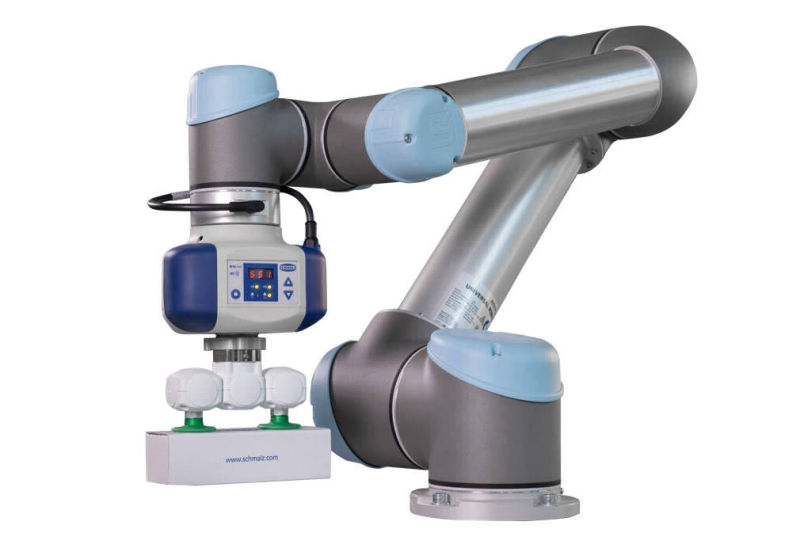
Robotic Assist or Collaborative machining is a phase that has increased in popularity recently mostly since all manufactures know that oftentimes labor is the largest cost driving component of a manufacturing process, which is why the inclusion of labor savings robots is yet another means of optimization and sustaining low costs.
Slabe Machines bank of Universal Robots are easily programmable, infinitely flexible and extremely easy to set-up and operate in various machining applications. These robots excel in certain robotic applications such as pick-and-place, high-volume machine loading, inspection of critical characteristics, painting, burring – basically… any repetitive task for which automation can better streamline the process. Robotic machining can also be done by having a robot move a workpiece from station to station where each station preforms an independent automated machining process necessary to bring the part to a greater state of completion, OR multiple industrial robots can transfer / ‘hand off’ the part to and from each other and input the workpiece into the various machining processes simultaneously - with automation and robotic machining, the possibilities are endless.
Certain applications, especially deburring, can be tough on people when working on large quantities, and if the parts are very small it gets additionally challenging since holding small parts can get tricky and should one lose their grip, high-speed burring wheels can turn parts into projectiles. Most of the material we use for our aerospace parts are extremely difficult alloys and heat from deburring / material removal from these parts can also be an issue, increasing the difficulty and complexity of handling them...
Depending on part size, payload and/or volume of parts manufacturing, Slabe machine uses our pool of robots for various deburring operations which helps operators. Our robots are technically called ‘Cobots’ - since they work collaboratively with people towards the end of minimizing the strenuous nature of repetitive tasks - Robot accuracy is reliable, consistent and maintains repeatability, so operators don’t have to worry about anything except for workpiece loading on the fixture or conveyor and inspecting the parts after robot performs the operation.
For some operations, we use a robotic cell alongside a CNC machine where the robot can perform the deburring process on the parts after they exit the machining process on which the operator is primarily focusing.
Robot programming for universal robots (robot manufacturers) is simple and an offline training from Universal robots will suffice to start programming. These industrial robots don’t need much periodic calibration either, which helps in reducing downtime and maximizing the efficiency of the entire machining process.
Combination of Universal Robots and I/O Controls (Robot Control) greatly enhances the robotic automation of so many machining processes and various other applications. We use robots at various secondary equipment (grinders, buffing wheels, speed lathe’s etc.) and automate using various sensors (photo reflective, proximity, pressure etc.), so that one operator can perform multiple steps / processes in a single operation while inside his working area - without the automation provided by the robotic machining the same machining process would take several steps or machining operations often times necessitating several operators at different workspaces.
Slabe machine uses in-house CAD/CAM software along with rapid prototyping machines to design and build surprisingly simple workholding fixtures that can be efficiently used at the robotic cell.
At Slabe machine, we use robot arm for–